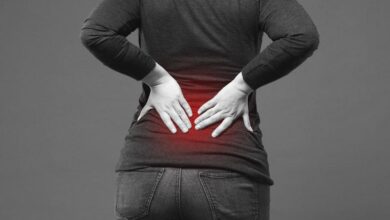All you need to know about uterine fibroids

Uterine fibroids are non-cancerous growths that develop in the uterus and are mainly visible during the childbearing years. These growths are made up of fibrous tissue and muscles that vary in size, referred to as leiomyomas or myomas. Since fibroids are symptomless, most women are not aware that they have them. Dr. Ulas Bozdogan is among the specialists who offer you in-depth evaluations and educates you on fibroids and various treatment options available.
What are uterine fibroids?
Uterine fibroids are muscle growths that form within the uterus and are not cancerous. However, they can grow to very big sizes and at times to the size of a grape or even bigger. Research has not yet established fibroids’ exact cause but is more likely to occur due to hormonal changes. Fibroids mainly grow during the childbearing years when hormonal changes are very common and halt or slow once they attain menopause with estrogen levels decreasing. In other cases, uterine fibroids might develop during pregnancy, affecting the woman’s ability to carry the pregnancy to term. Therefore if the fibroids are present during pregnancy, they are monitored regularly to ensure that they do not affect their health and growth.
What symptoms do fibroids cause?
Large fibroids often cause symptoms, while small fibroids are symptomless. Spotting between periods, increased urge to urinate, very heavy periods, prolonged periods, and pain during intercourse, backache, and severe cramping during periods are common symptoms of uterine fibroids. One is likely to have fibroids if they have persistent pelvic pain throughout their cycle, heavy, painful, and prolonged menstrual bleeding. Spotting between periods and difficulty with bladder functions may also be common indications of uterine fibroids.
Since the cause of uterine fibroids is still unknown, hormones, body growth factors, or genetic changes are some of the factors that may contribute to the development of uterine fibroids. Fibroids usually develop from uterine stem cells within the uterus. Some of them tend to grow at a slow rate, while others advance very quickly. Some of the fibroids also can remain the same size or undergo periodic spurts, and many of them shrink on their own. If anyone in your family, either mother or sister, has fibroids, you are more likely to have them. Obesity, using birth control pills, or dietary factors may also increase your risk.
What treatment options are available for fibroids?
Symptomless fibroids do not require treatment, but symptomatic fibroids may be treated using various approaches, including uterine artery embolization to cut off blood supply to the fibroids, hormone therapy, and surgical removal of fibroids using minimally-invasive procedures, robot-assisted approaches, and an MRI-guided focused ultrasound. Each of the above treatment options has different pros and cons, which are reviewed during the physical examination to choose the one that suits you.
Can fibroids grow back after they are removed?
In some women, fibroids may grow back, but the likelihood of regrowth depends on various factors like the method originally used to treat them.
Suppose you or someone close to you has been diagnosed with uterine fibroids, consult advanced endometriosis center: Ulas Bosdogan, MD today for more information on various treatment options available. The specialists in this facility use the da Vinci system to achieve a high degree of accuracy for superior outcomes.






